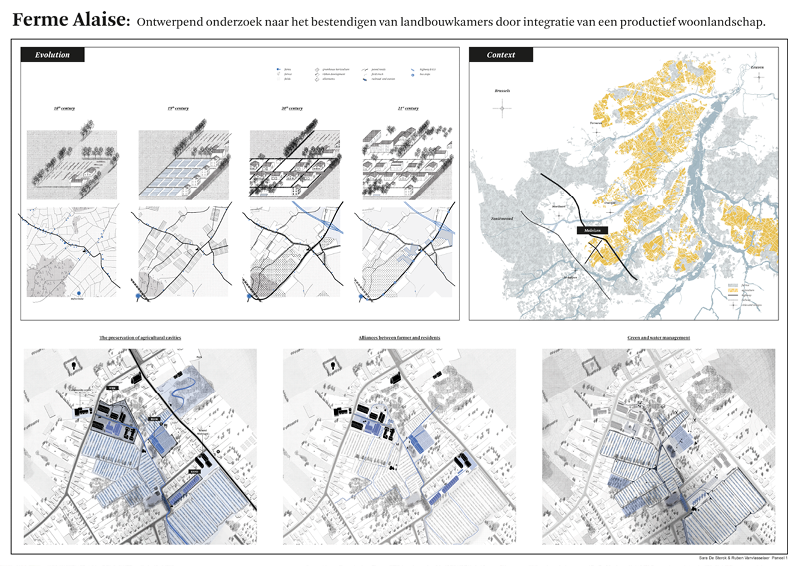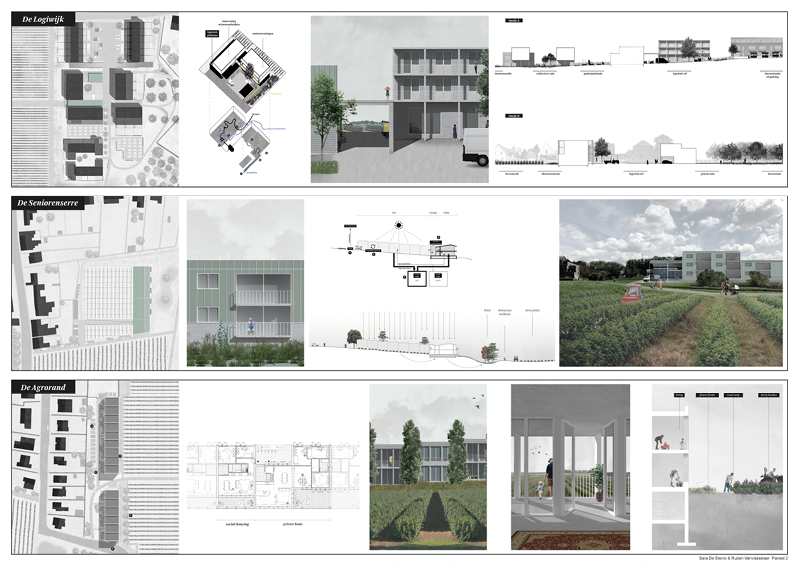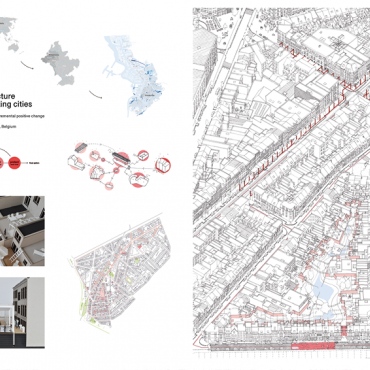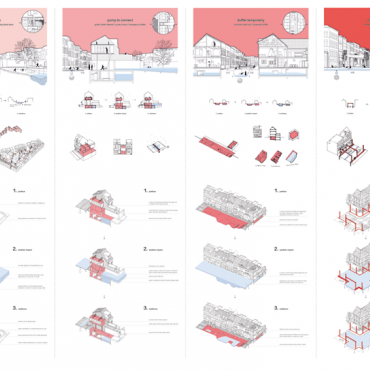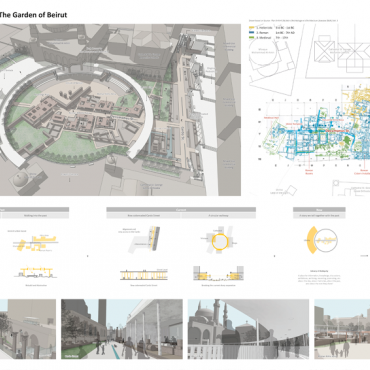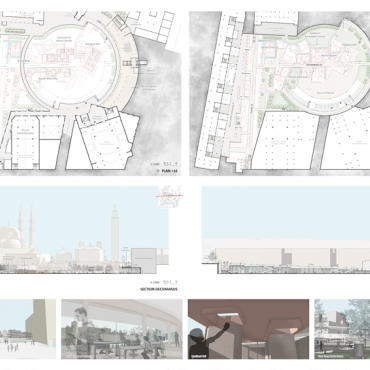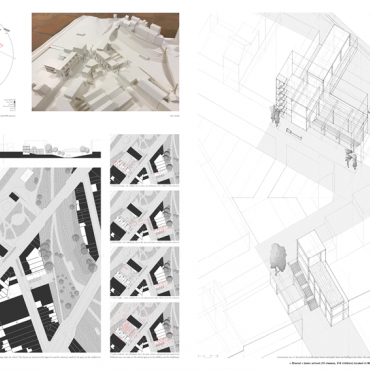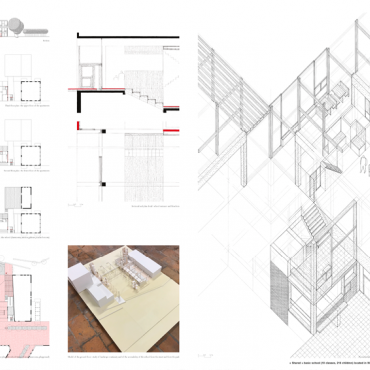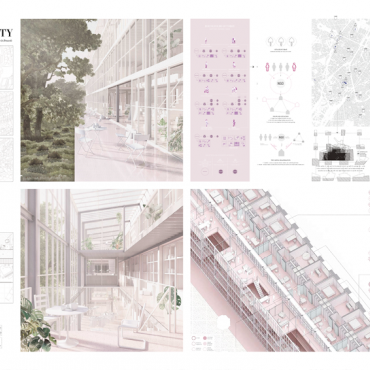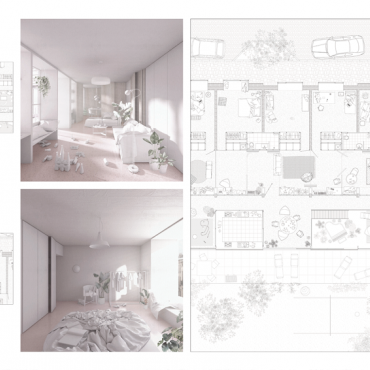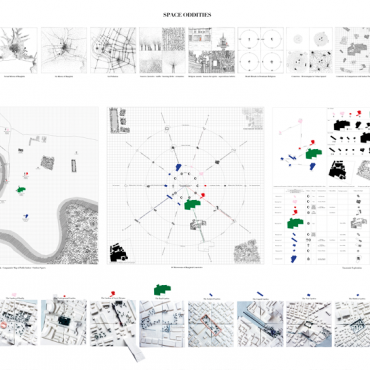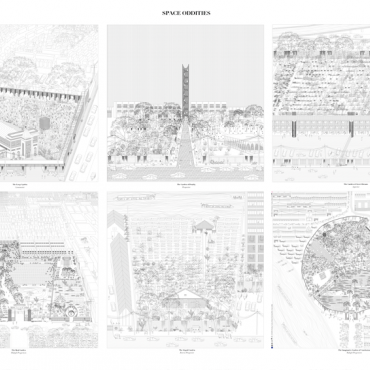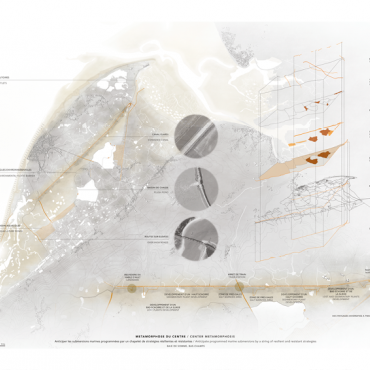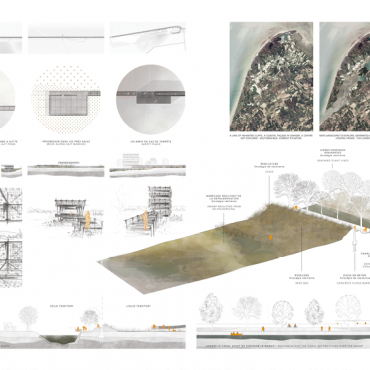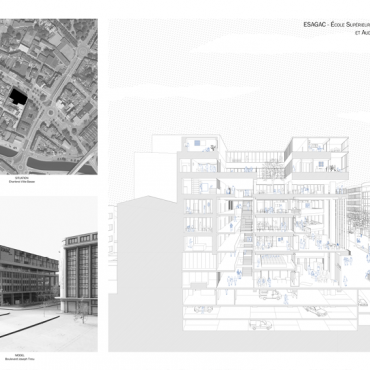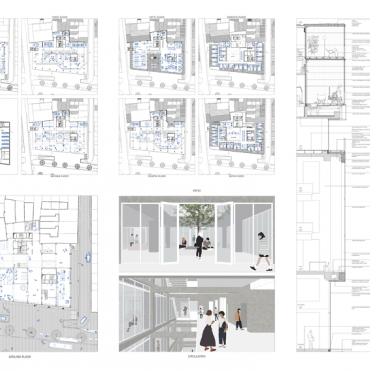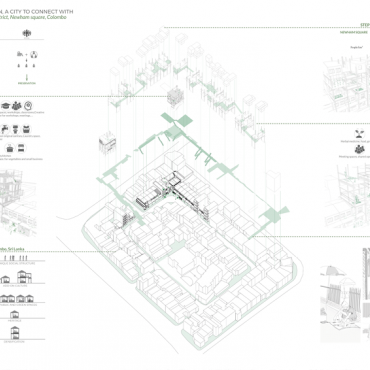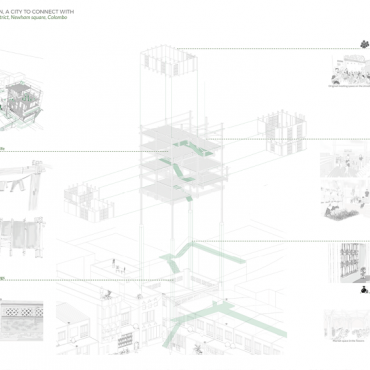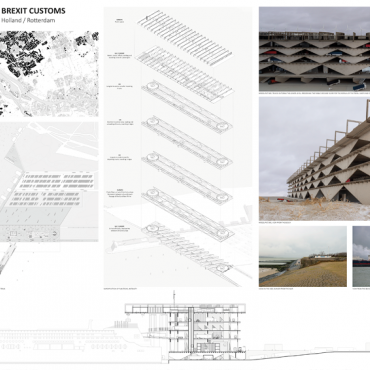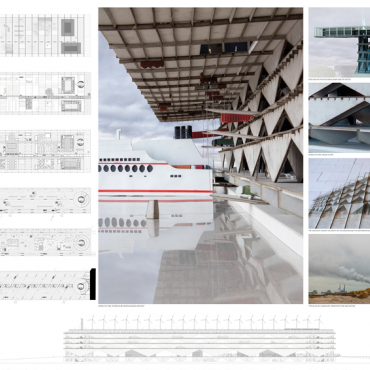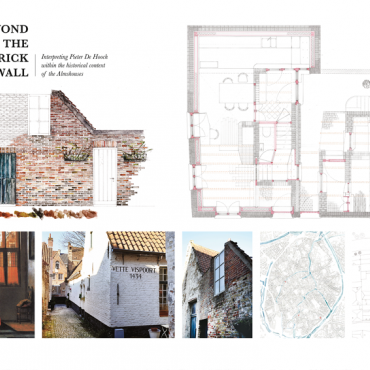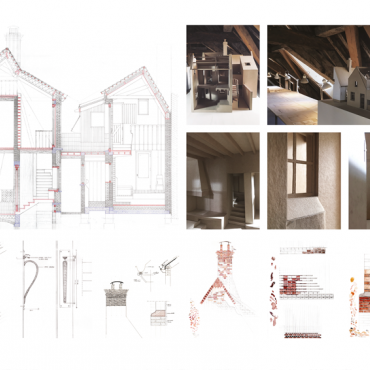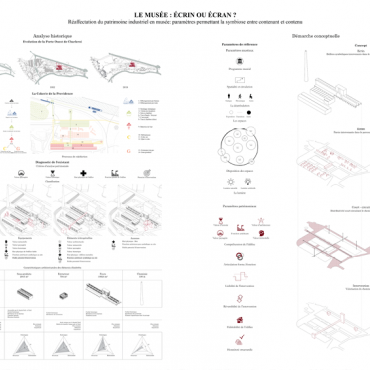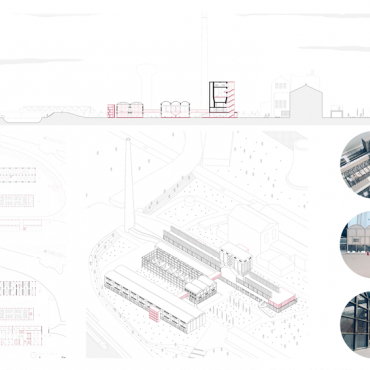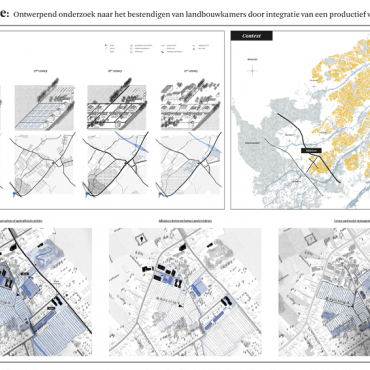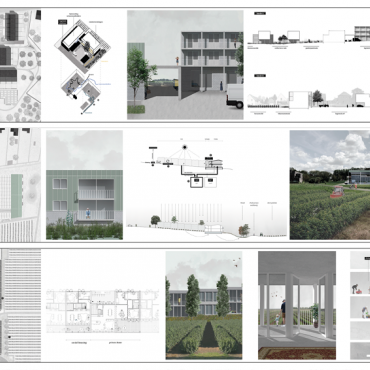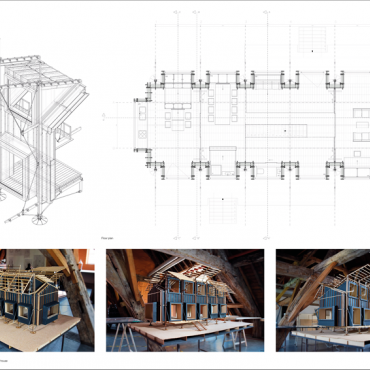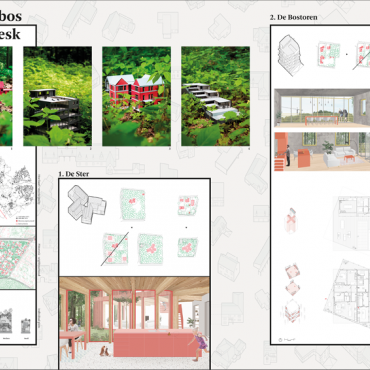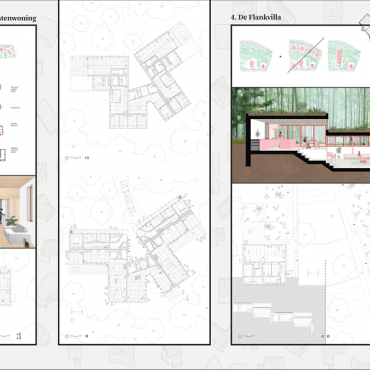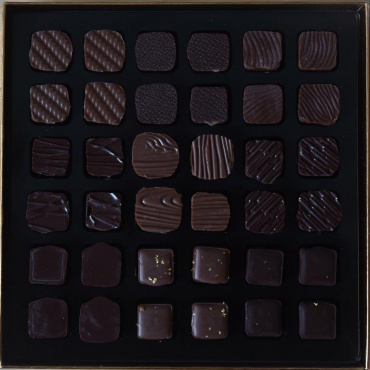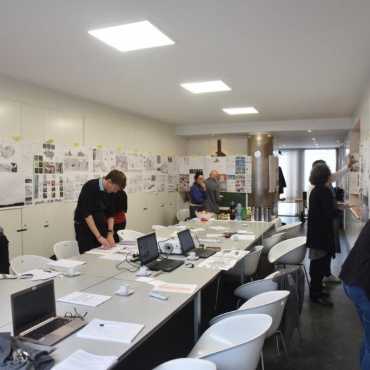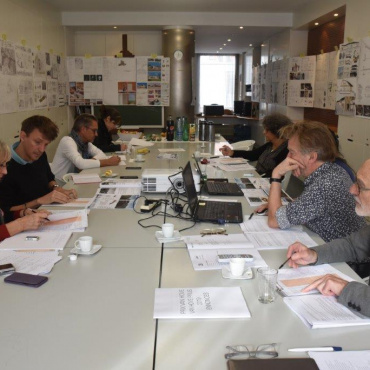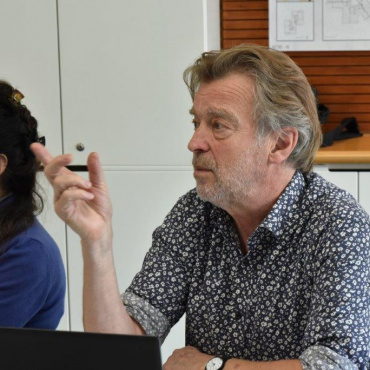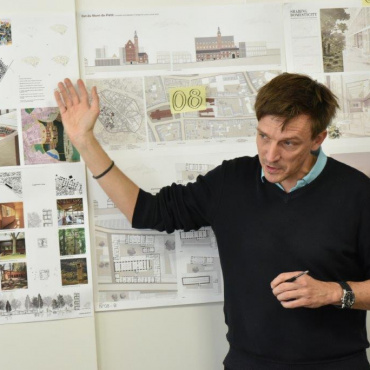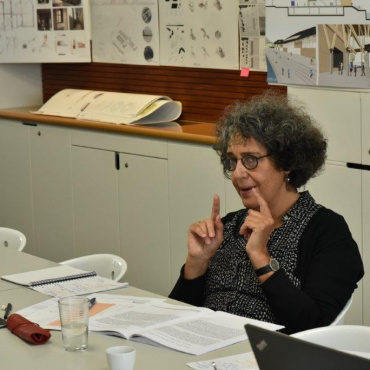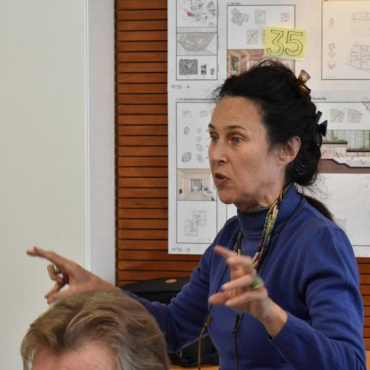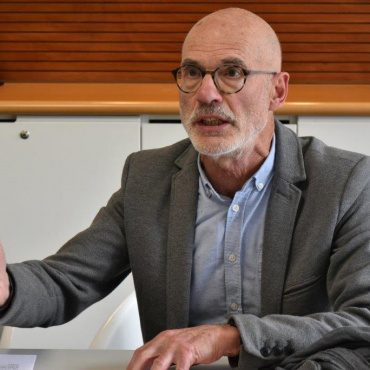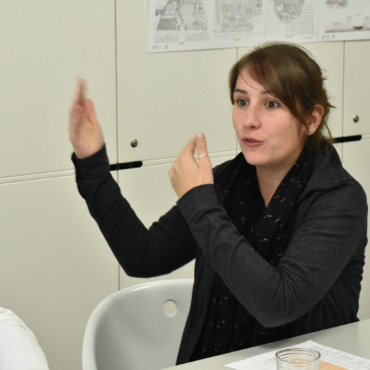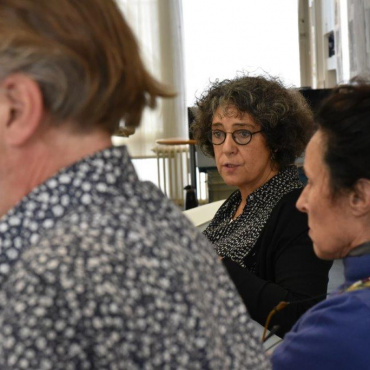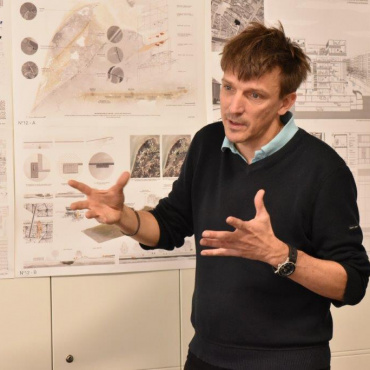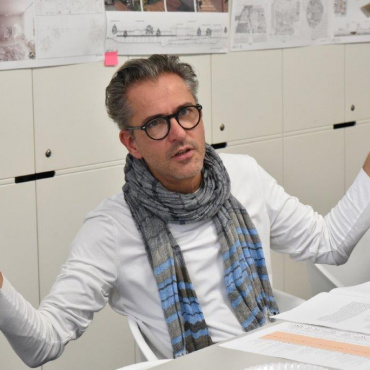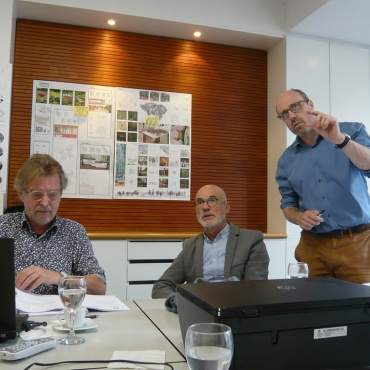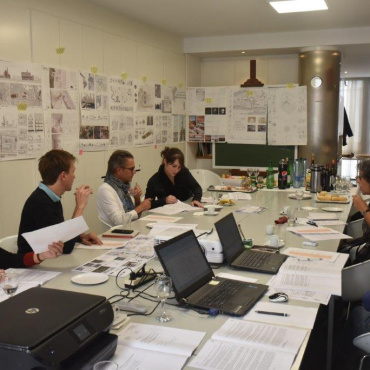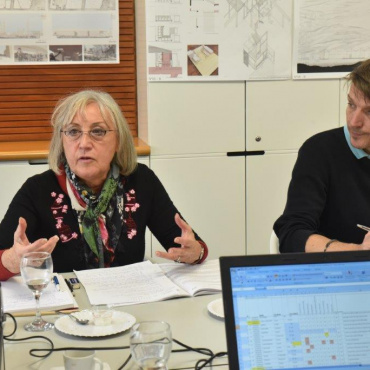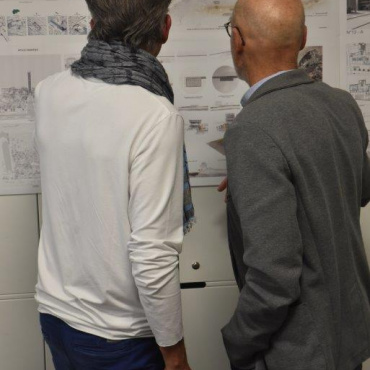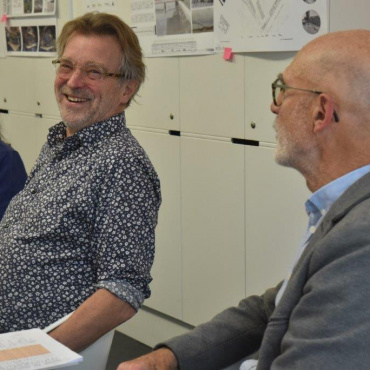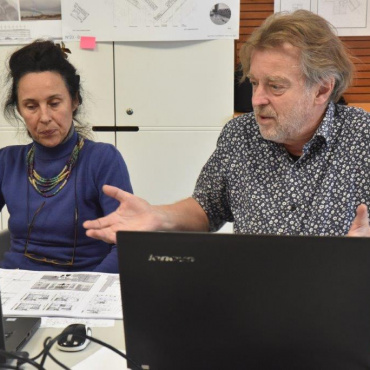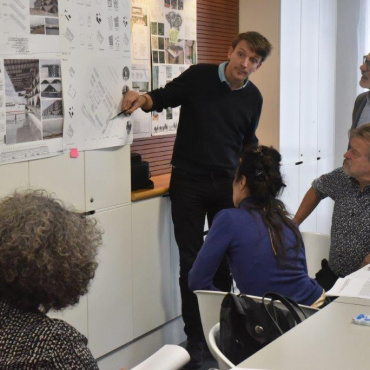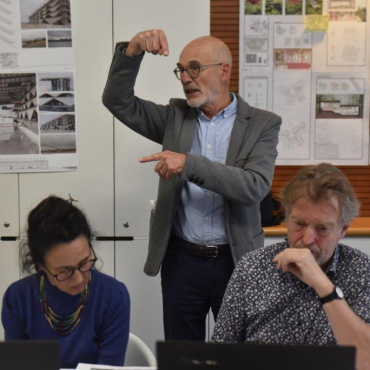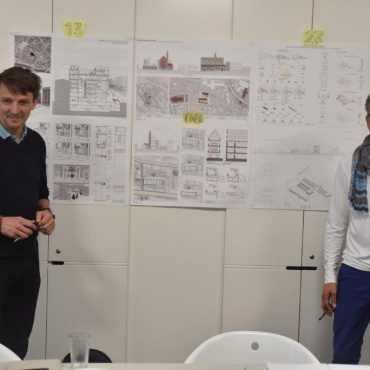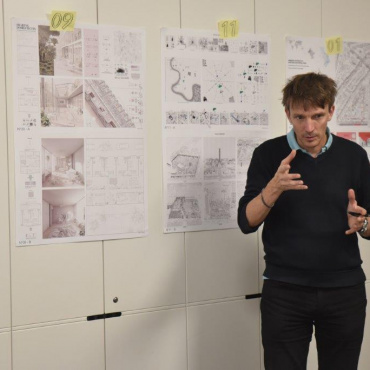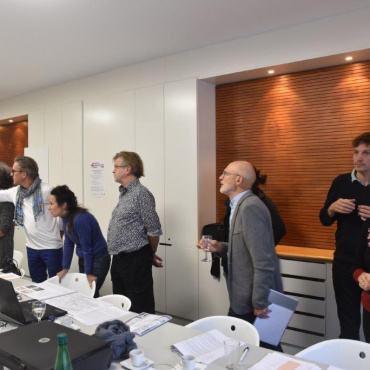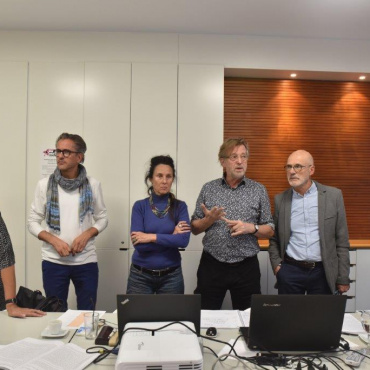Van Hove Prize 2019
On October 19, 2019, the jury of the Van Hove Prize met at the headquarters of the UPA-BUA. It was composed of 9 members:
- Chantal Dassonville, architect, Deputy Executive Director of the Architecture Unit of the FWB
- Sven Grooten, architect and urban planner, co-founder of B-architecten and B-bis
- Didier Holemans, engineer-architect, president of UPA-BUA
- Thierry Lamy, architect, member of the Board of Directors of UPA-BUA
- Giulia Marverti, architect UPA-J
- Marie-Madeleine Mennens, architect, member of UPA-BUA, CRD Brxl, CfgOA. BCBW and CNOA
- Nico Steinmetz, architect at G.-D. from Luxembourg
- Catherine Titeux, architect and dr. in history of art, teacher at ENSAM (Montpellier)
- Pierre Van Assche, architect and urban planner, member of UPA-BUA, in charge of the Van Hove Prize.
The Proclamation took place on November 20th 2019.
Details and comments of the jury
In all of the projects presented, as in previous years, most of them are worthy of interest and show nice outfits in their presentation. By its mode of operation, the Van Hove Prize brings together a fairly large sample of projects that is probably representative of the best of all the faculties of architecture in Belgium. Thus each year, some trends more or less shared by these faculties, as well as some specificities of these faculties, appear. In this sense, the Van Hove Prize is an interesting observatory of the training of architects in Belgium. In general, the jury and the organizers of the Prize perceive in this last session of the Prize, that the teaching of the architecture pursues not only an orientation more and more based on deep bases in the preliminary research projects, as observed in previous years, but that the issues addressed are constantly increasing their geographic size as well as their ambitions. Thus, this year, nearly one in four candidates has tackled broad theoretical or territorial questions posed by climate challenges, rising sea levels or water scarcity. To a lesser extent, many projects are engaged in researching strategies for the future of peripheral and rural territories, particularly with regard to their densification or productivity. However, although the jury approves the involvement of architects in the research related to these issues, he believes that in many cases these are beyond the skills expected of the isolated architect and call for the establishment of teams multidisciplinary for what an applicant for the diploma of architect or engineer architect can not alone assume. Similarly, the jury of the Van Hove Prize does not claim to have the material conditions nor to gather the skills to judge the
relevance of such projects. Therefore, the jury considers it necessary to require in the future that the presentation of the projects at the Van Hove Awards give priority to architecture as a concrete expression of theoretical, programmatic or societal discourse.
In addition to the issues of climatic, hydraulic, rural or peripheral strategies mentioned above, urban density,
culture and equipment remain the favorite subjects of the diploma projects presented at the Van Hove Prize, without forgetting the reallocation of existing or of heritage, some pointed societal issues as well as the detailed exploration of the small scale of housing.
Among this variety of programs, the jury has made a selection of five projects, namely the projects Nos. 1, 3, 22, 26 & 29, which reveal this diversity as much as they testify to a certain daring served by the qualities of basic research, solutions and architectural concretization. Wanting to respect this diversity without favoring a particular aspect with a single prize, the jury decided unanimously to award these five laureates five special mentions of € 1,000 each, without ranking order.
Award-winning projects
Sophie LEEMANS
KUL-Sint Lucas Brussel
« Architecture and flood permitting cities - urban flooding as incentive for positive incremental change »
In her graduation project, Sophie Leemans describes a number of important challenges that threaten our built environment over the next few decades. In particular, she seeks to anticipate the challenges and solutions to the consequences of floods caused by global warming. Because of this, the sea level will rise and we will be subjected to increasingly extreme weather conditions, which means alternating periods of abundant waterfalls and severe droughts. Our cities today are not sufficiently adapted to the consequences of these phenomena. With a complete arsenal of interventions, Sophie Leemans explores proposals to try to protect the urban fabric and make it more resistant to the threats of water. Interventions in the existing built environment attempt to provide solutions to temporarily retain large amounts of water. This includes infiltration, network pumping, temporary buffer ponds and protection of the weakest areas. In all cases, the spatial consequences of these interventions are studied in a qualitative way. As part of this diploma project, the jury appreciated all the research, as well as the arsenal of proposed interventions and their in-depth and insightful applications in the Brederode district, a densely populated area in the center of Antwerp.
S.G
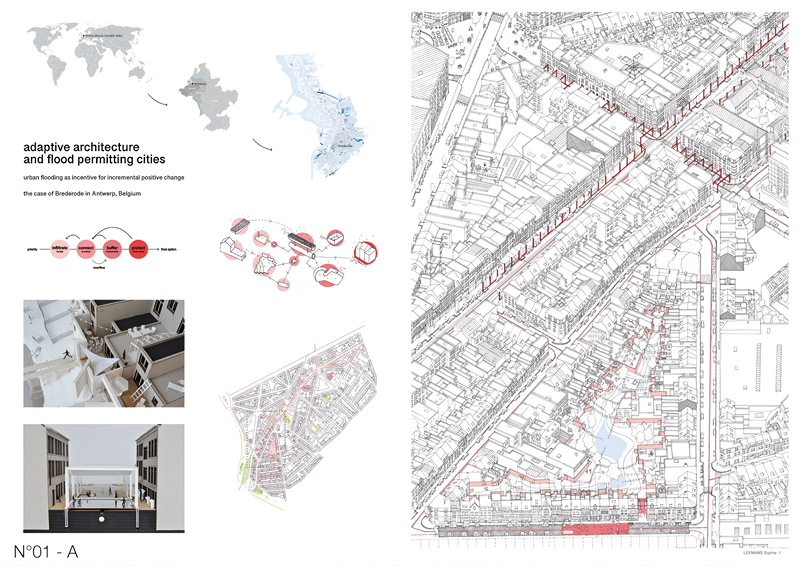
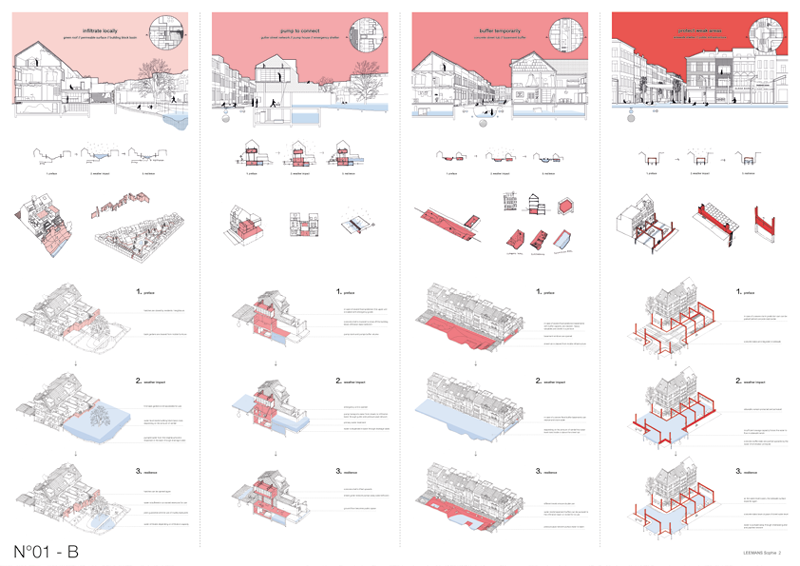
Kuang-Liang LO
KUL-Sint Lucas Brussel
« A heart we share - The garden of Beirouth »
Between no less than four religious buildings of different cults, and in the vicinity of imposing urban buildings, the heart of the city which in Beirut was a field of ruins in a disjointed environment, becomes thanks to the proposed intervention and in the light of the circular form that unifies it, a place of rediscovery and knowledge of the great civilizations constituting the shared roots of Lebanese society. Going back to the Hellenistic period, passing through the Roman and medieval periods to end in the Ottoman era, the superposition of archaeological layers accidentally uncovered after the devastating conflicts in Beirut is clarified by the architectural project. The main remains are protected by awnings whose cutouts give them a new readability.
What was an impassable gaping hole becomes a major public space in the city, planted and open to all,
symbol of the peaceful assembly of peoples and cultures. Thus, in reference to the Pax Romana, the project upgrades the cardo (north-south axis) on the western edge of the site and reveals at the same time than the ancient hydraulic networks Roman the presence of the decumanus (east-west axis). In the longitudinal axis of the excavations, it determines the oriental access of the archaeological site in a judicious reconfiguration of the esplanade overhanging it as a balcony and under which new cultural facilities (library, etc.) and event facilities (as bleachers for a forum) settle, placed at the levels of ancient soils that the project manages to connect, in the end, to all the functions surrounding the site.
P.VA
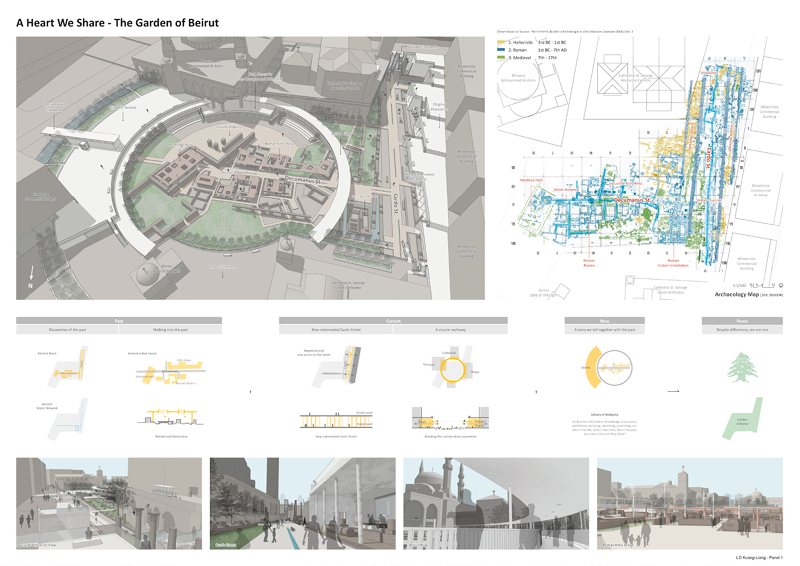
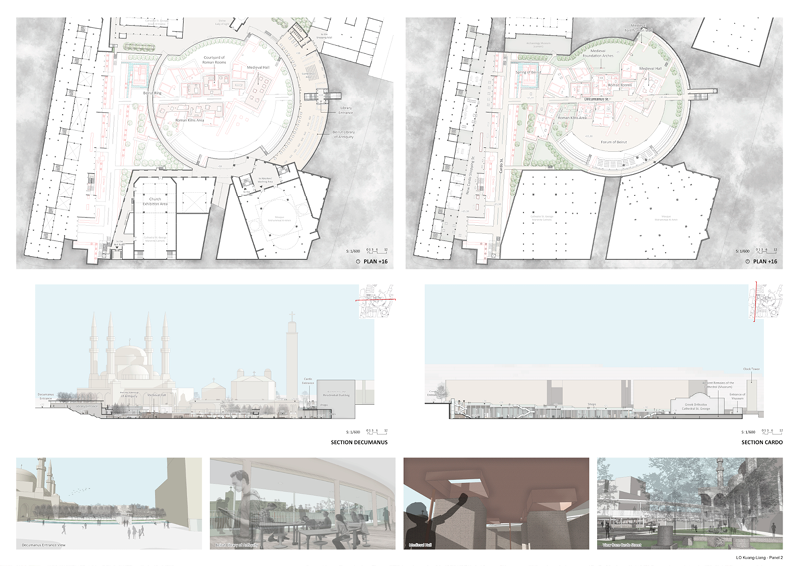
Ludovic GAFFAREL
UCL LOCI Louvain-la-Neuve
« The post Brexit customs - Hoek van holland / Rotterdam »
The project is located at the mouth of the Rhine on the outskirts of Rotterdam at the place called "Hoek van
Holland" which is for centuries a major maritime distribution hub connecting the United Kingdom to the European freight network. One of the consequences of Brexit is the restoration of customs duties and border controls. A rational solution can be imagined for this major infrastructure node that combines access to boats, the beach and the city of Rotterdam, where goods and people converge by road and by train. The importance of the flow of people and goods is variable. The project integrates all these issues of different scales into a well thought through architectural project. By a subtle game of levels circulations do not mix. The movement of people doesn’t interfere with that of the freight loaded on board of the boats by ramps connecting the different levels and by cranes integrated into the huge awning covering the loading docks. The areas for waiting, controlling and for the hotel are also perfectly defined. The choice of the structure made of prefabricated reinforced concrete triangular shells sublimates the function. It allows smooth and unhindered circulation of trucks inside and marks the landscape on the outside by an airy monolithic form whose triangles have a connotation with the sea and the sails of the boats.
MM.M
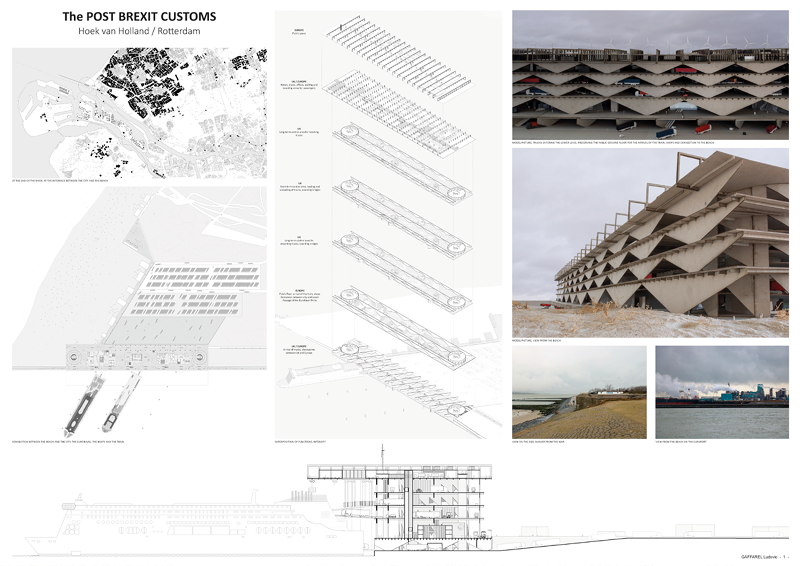
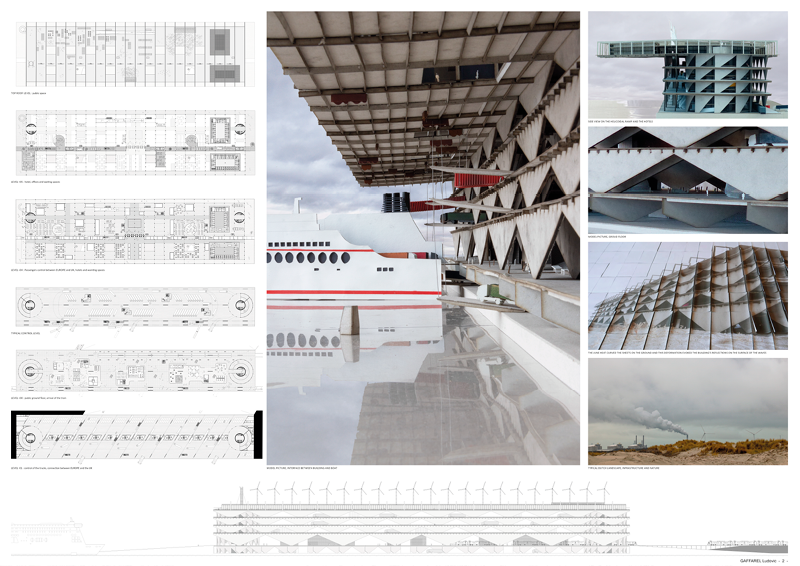
Dorine VAN DER BANK
KUL-Sint Lucas Gent
« Beyond the brick wall : interpreting pieter de hooch within the historical contexte of the almshouses »
A great Belgian architect said that every morning he flipped through an art book, a bit like a gymnastics of the mind, to enter a framed space, even a mental space. It is the same approach that the jury appreciated in Dorine Van der Bank's project Beyond the Brick Wall, which associates a painter, Pieter de Hooch, with a
project to restore an architecture of the same period to offer a contemporary intervention, relying on analogical design to feed its design.
This tactile and fragile design surprises almost in the age of digital binary, all or nothing, without tolerance or imprecision. But it is precisely this juxtaposition of spaces, of chiaroscuro, which strengthens the perspective and the spatial feeling that we find in Hooch's work, suggesting the exterior, and hence an external framework. The intimacy of space is achieved but not without a spatial abyss, not without an awareness of a larger world, a reflexive thought that opens the way to a dialectic of the Enlightenment.
To know how to define this opposition between the boundary determining the space and the opening transcending it, to cross this limit without destroying the definition of the space is indeed the delicate exercise of architecture.
The jury also appreciated the subtle and refined drafting work, the coherence of a contemporary restoration, without strain, with the current requirements in a project studied up to some details. Beside spectacular and thunderous projects, in a world that has reached its limits, beauty is all the more to be found in the poetry of historical humbleness and in the ability to restrain oneself. Listening to history and cultivating your garden are perhaps the most sustainable strategies.
D.H
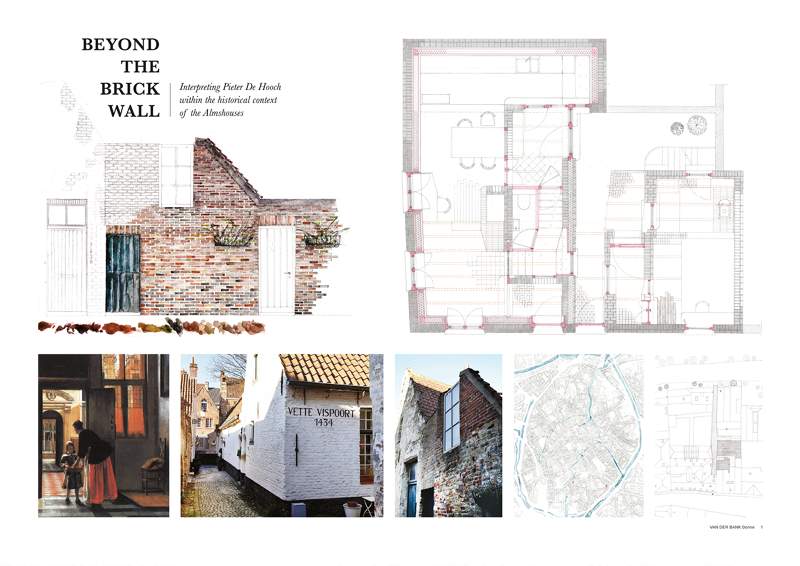
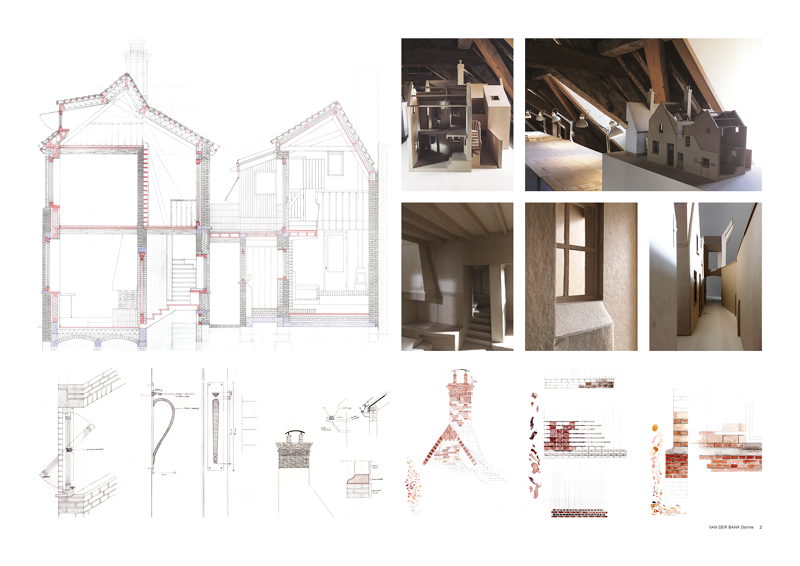
Sara DE STERCK & Ruben VANVLASSELAER
KUL – Ingenieurswetenschappen-architectuur
« Ferme Alaise - Design research into the perpetuation of agricultural rooms by ingrating a productive residential landscape »
Through a delicate graphic expression where the various scales of the project are approached, the jury was
seduced by this architectural research applied to the hamlet of Maleizen (Flemish Brabant) and dealing with a productive landscaped dwelling program. It addresses a socio-economic system in which agriculture finds a central role and identity in society, while shaping the landscape in a sustainable way with new forms of housing. Combining semi-urban fabric and agriculture, this project from Ferme Alaise proposes a new farm model for the 21st century, responding in particular to the demand for densification. This is expressed in the form of three typologies integrated into the village structure and divided into three zones: the production buildings, the greenhouses for the elder, and the housing buildings bordering the cultivated lands. The motivation of the project stems from the observation of the exodus of the city and the ideal of living in rural areas. This has led to the colonization of the countryside by linear allotments and the concreting of agrarian structures with the consequence of enclosing large farms, leading to the devaluation of the local agro-food system and the rupture with the social fabric. Today, especially in Flanders, the countryside is facing new housing problems due to demographics, the aging of the population and the need for social housing. This state of affairs puts a lot of pressure on the remaining free spaces. It is here that the project takes up the very current issue of density in peri-urban and rural areas, and proposes a coherent solution that brings added value to the reflections of society on the quality of inhabiting the territory.
G.M – Ch.D
